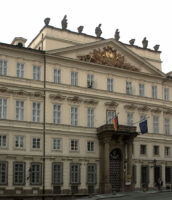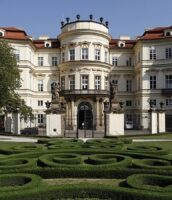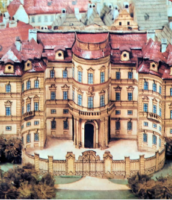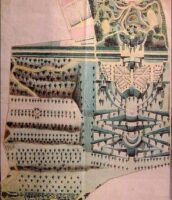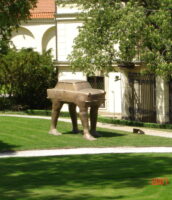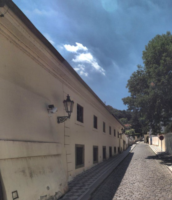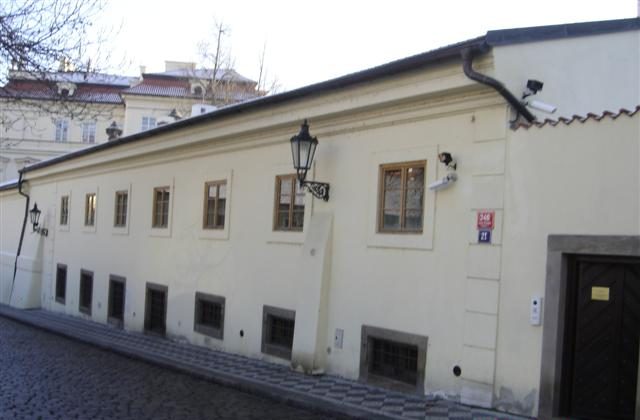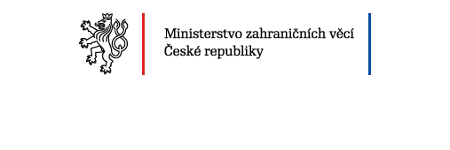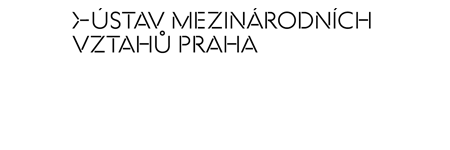The Lobkowicz Palace on Vlašská street in Malá Strana is one of the most impressive palaces in Prague. A monastery brewery used to stand in its place. Later a farm yard was founded here and it often changed owners. Until 1696 when František Karel Přehořovský count of Kvasejovic bought vineyards and the house itself. The house was called „At the Three Musketeers”. A big palace surrounded by a magnificent garden was built in its place. The palace building is built on the foothills of Petřín slope, oriented in north – south direction. It faces Vlašská street with a four-storey facade and towards Petřín and the garden opens with a segmented facade and a court of honour. It was finished around 1707. Both the palace and the garden were built in the Baroque style. Giovanni Battista Alliprandi, the architect of Italian origin, is considered to be the author of the building. Bartholomeus Scoti was the builder. The garden is the masterpiece of J.J. de Capauli and consisted of the private part that was fenced and of the public part that was on the west part of Petřín slope.
A big glasshouse was built before 1744 under the owners of the Czernins of Chudenice.
The palace was partly damaged by fire in 1768 and afterwards recieved today’s late baroque appearance. At that time, it belonged to the Lobkowitz family, to whom it was passed by the marriage of Antonia Czernin of Chudenice to August Antonín Josef of Lobkowitz.
The author of the reconstruction was Ignác Jan Nepomuk Palliardi. The palace was raised by one floor above side wings and the central roof was adjusted. The oval court of honour, formed by the wings of the palace, was outlined by a metal fences and a gate, both set in pillars. There are stone vases and plastics on the top of the pillars. The garden was also changed. From French-Italian style it was transformed to the English style. The glasshouse was modified and sala terrena – a ground building open to the garden – built. Many exotic plants and trees were also imported.
The main façade with an entrance is oriented to the north. The street side starts with a fence wall, to which farm buildings were attached and in which there is a gate. Further there is the palace itself and then the wall continues and after several meters it is followed by the orangery building.
The Lobkowitz family owned the property until 1927 when, after the land reform in 1919, they were no longer able to hold it and the Prague palace was sold to the state. The Ministry of Education and Culture had its seat here. After 1945 it became the seat of foreign embassies and since 1974 it has been the seat of the Embassy of the Federal Republic of Germany. The consular department is now located in the orangery.
In September 1989, the embassy became a refuge for East Germans who decided to apply there for asylum and permission to travel to The Federal Republic of Germany. They were accommodated inside the palace and also in the tents in the garden. The then Minister of foreign affairs Hans-Dietrich Genscher announced from the balcony, above the court of honour, that they will be allowed to leave. This event is commemorated by a plaque on the balcony as well as a sculpture by David Černý called Quo vadis in the embassy garden.
Sources
Video published with the consent of Metrostav DIZ.
Building-historical survey of Lobkowicz Palace – Ing. architect Martina Bártová
Study of the restoration of the garden of the Lobkowicz Palace in Prague, part I. Anthropology of the place – Ing. architect Jaroslav Novák CSc.
https://pamatkovykatalog.cz/lobkovicky-palac-15530101
https://www.idnes.cz/praha/zpravy/navstave-ambasada-velvyslanectvi-nemecko-lobkovicky-palac-praha.A180815_420981_praha-zpravy_rsr

